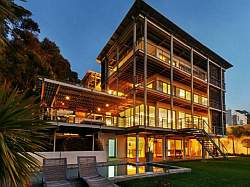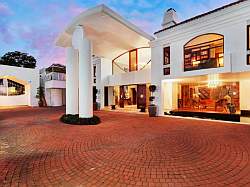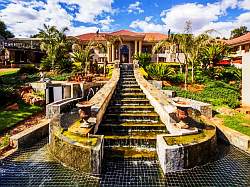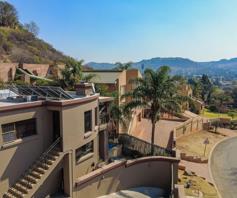The economic pressures and junk status notwithstanding, properties in the Cape are still fetching excellent prices.
 This super-luxury Clifton home is on the market for R150 million - click here to view.
This super-luxury Clifton home is on the market for R150 million - click here to view.This is according to Samuel Seeff, chairman of the Seeff Property Group, who says they have concluded a number of recent high-value transactions on the Atlantic Seaboard.
These include R54 million for three sales ranging to R27 million in Camps Bay, a single sale of R82 million in Fresnaye, a record sale of R32 million in Hout Bay and R34 million in Higgovale in the City Bowl.
A study done by Seeff, based on data from Lightstone and Propstats for the period 2011/2 to 2016/7 also reveals that Cape Town is now home to nine of the ten richest suburbs in the country, up from seven two years ago, says Seeff.
Clifton tops the list with an average selling price of R23 million. Only one Johannesburg/Sandton suburb, Sandhurst, ranks in the top ten at fourth place, with an average selling price of R16.5 million. This is two places lower since late 2015, while Westcliff and Dunkeld meanwhile have dropped off the top ten list altogether.
 This six bedroom en suite home with stunning views in Bantry Bay is selling for R90 million - click here to view.
This six bedroom en suite home with stunning views in Bantry Bay is selling for R90 million - click here to view.The top ten rank as: Clifton (R23 million), Llandudno (R17 million), Bantry Bay (R16.9 million), Sandhurst (R16.5 million), Camps Bay (R16.2 million), Fresnaye (R16 million), Waterfront (R16 million), Higgovale (R16 million), Bishopscourt (R15.1 million) and Constantia Upper (R11.6 million).
Seeff says the decline in the rankings of the top-end Johannesburg and Sandton suburbs become even more pronounced in the R20 million-plus super-luxury sector.
“High-net-worth buyers are just not investing at the same levels in Sandton, and even less in Pretoria East, and the palatial homes there are still struggling to achieve the pace of sales and prices that the Atlantic Seaboard and City Bowl are achieving,” he says.
Lightstone data shows that for the Johannesburg/Sandton area, an average of 6 to 7 residential transactions priced above R20 million were recorded annually between 2010 and 2015. This increased to 10 transactions over the last year. Only three Pretoria East residential transactions appear to have taken place since 2010.
 This modern five bedroom en suite home in Camps Bay is on the market for R38 million - click here to view.
This modern five bedroom en suite home in Camps Bay is on the market for R38 million - click here to view.Comparatively, 20 to 50 transactions were recorded for the Cape in the 2010 to 2014 period, rising to 67 last year - three times more compared to Johannesburg, Sandton and Pretoria East.
By early June this year, there had already been 44 transactions above R20 million, generating over R1.1 billion in revenue. Incidentally, Seeff says 30% of these were to Joburg buyers, a handful from KZN and only a few foreign sales (mostly UK and German buyers), the latter being less than 10%, and far less than commonly perceived.
Where prices have comfortably reached the R100 million to R200 million-plus price levels on the Atlantic Seaboard, Pretoria East has only had a single sale of R45 million (Waterkloof, 2014) and R66 million in Sandton (Empire Place, Sandhurst, 2016). Even in the City Bowl, Seeff says they have just concluded a record R34 million sale, and in Hout Bay R32 million.
Seeff says he would have expected the figures to have been reversed, i.e. Joburg/Sandton achieving more sales and much higher prices considering Sandton’s status as the wealth capital of the continent and the "wealth there is enormous”, he adds.
 This contemporary architecturally-designed home in Bantry Bay offers five bedroom suites and is on the market for R59 million - click here to view.
This contemporary architecturally-designed home in Bantry Bay offers five bedroom suites and is on the market for R59 million - click here to view.Pretoria East is home to the premier government and ambassadorial belt, and he says he would have expected that the figures in respect of these figures to be reversed.
“As we can see, there just is not the same level of confidence,” says Seeff.
Why? Well, Seeff says that buyers and property investors, not just at the top end of the market, but across the board want to know that they are investing in areas where service delivery and zero tolerance for corruption are hallmarks. They want to know that their investment is not just safe, but that it will grow in value.
The shift in government in both the Johannesburg and Pretoria metros has been welcomed, but Seeff says that only once major inroads have been made there in terms of service delivery and cutting corruption can we expect sales volumes and prices at the top end to start catching up to the Cape.
The Atlantic Seaboard average selling prices (full title) have more than doubled over the last five years (since 2011/2012), says Lance Cohen, Seeff’s luxury market specialist for the Atlantic Seaboard. The biggest gains have been in Fresnaye (+167%) and Camps Bay (+128%), the latter attracting the highest number of R20 million-plus sales since.
 This designer home in Atholl offers three bedroom suites and is selling For R10.999 million - click here to view.
This designer home in Atholl offers three bedroom suites and is selling For R10.999 million - click here to view.Where only Clifton topped the R15 million average price mark, there are now seven Cape suburbs above this range, while Clifton now tops R20 million for full title property, says Cohen. Top-end luxury properties and locations can now range to R185 million to R300 million.
Seeff compares what you can buy on the Atlantic Seaboard compared to Sandton and Pretoria East:
Atholl
In Atholl (Sandton), you can get an 818sqm house with extras such as a wine cellar, outdoor entertainment area, staff accommodation, multi-car garaging and a swimming pool for R10.999 million. A similar house on the Atlantic Seaboard, Camps Bay for example, will cost R18 million to R32 million, and in Bantry Bay as much as R30 million to R40 million.
Sandhurst
 This French chateau-style home in Sandhurst offers five bedroom suites and is on the market for R48 million - click here to view.
This French chateau-style home in Sandhurst offers five bedroom suites and is on the market for R48 million - click here to view.In Sandhurst (Sandton), a palatial French chateau-style house with spectacular interiors, bespoke finishes and parklike grounds is priced around R48 million. A comparative property in the Atlantic Seaboard suburbs of Clifton, Bantry Bay and Fresnaye will cost around R75 million to R185 million, says Cohen.
Pretoria East
In the exclusive Mooikloof Equestrian Estate in Pretoria East, a palatial 2 291sqm home, set on land of 10 000sqm is priced at R25 million. The grand homestead has seven bedrooms, luxurious living areas, a bar, wine cellar, home cinema theatre, huge gymnasium and sauna, tennis and squash courts, an extra-length lap pool that leads from an enormous entertainment patio with pizza ovens, an outside boma, staff accommodation for three people, multi-car garaging and top class security. A similar property in the Cape Town Southern Suburbs top areas of Bishopscourt and Constantia in Cape Town, has sold for R66 million.
Further comparisons
 This seven bedroom en suite mansion in Mooikloof Equestrian Estate in Pretoria East is selling for R25 million - click here to view.
This seven bedroom en suite mansion in Mooikloof Equestrian Estate in Pretoria East is selling for R25 million - click here to view.Land sizes are generally smaller in the Cape, as are the houses, especially when you look at the Atlantic Seaboard, although there are exceptions in Bishopscourt and Constantia.
What you get in Cape Town though, is the fabulous location and lifestyle, underpinned by confidence and a more solid foundation, service delivery and an intolerance for corruption.
This, says Seeff, is arguably the biggest lesson coming out of the growth of the Cape property market and continued influx of people moving to the metro from other regions.








